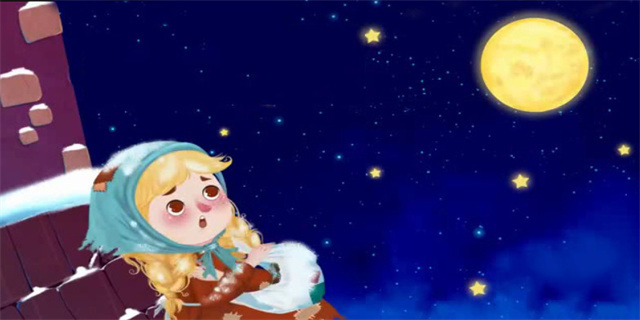首页 > 综合百科 正文
firework(Fireworks The Dazzling Spectacle of Lights in the Night Sky)
旗木卡卡西 2024-07-30 10:25:41 综合百科279Fireworks: The Dazzling Spectacle of Lights in the Night Sky
Introduction
Fireworks have long been a beloved spectacle, captivating audiences with their mesmerizing displays of light and color. From ancient civilizations to modern-day celebrations, fireworks have continued to ignite our senses and fill the night sky with their brilliance. In this article, we will explore the history, science, and cultural significance of fireworks.
1. Ancient Origins: A Glimpse into the Past

Fireworks can trace their origins back thousands of years to ancient China. Legend has it that a Chinese alchemist and inventor named Li Tian created the first firework accidentally while searching for the secret of immortality. The ancient Chinese quickly discovered the potential of these explosive creations and began using them during religious ceremonies to ward off evil spirits.
Fireworks soon spread to other parts of Asia and the Middle East, where they were adopted for similar purposes. The vibrant displays became symbols of power and prestige, with rulers using them to showcase their wealth and authority. As trade routes expanded and cultures intermingled, fireworks eventually found their way to Europe in the 13th century.

2. The Science Behind the Spectacle
Fireworks are an intricate combination of chemistry, physics, and pyrotechnics. At its most basic level, a firework consists of four main components: an outer casing, gunpowder, a fuse, and various chemical compounds known as \"star mixtures.\"

When the fuse of the firework is lit, it ignites the gunpowder, creating a controlled explosion that propels the firework into the air. Inside the firework, the gunpowder ignites a series of timed delays, each releasing a specific star mixture. These mixtures, made of different chemicals, create the vibrant colors and dazzling sparkles we associate with fireworks.
3. Cultural Significance: Celebrations and Symbolism
Fireworks have become an integral part of celebrations worldwide, symbolizing joy, hope, and new beginnings. They are prominently featured during notable events such as Independence Day in the United States, Diwali in India, New Year's Eve celebrations around the globe, and Chinese New Year.
Aside from their celebratory nature, fireworks also hold deeper cultural meaning. In many cultures, the loud explosion of a firework was believed to scare away evil spirits and bring good luck and prosperity. In others, they symbolize the triumph of light over darkness, a metaphor for overcoming challenges and finding inner strength.
Conclusion
Fireworks continue to capture our imagination and create unforgettable memories. Whether it's the oohs and aahs of a Fourth of July fireworks display or the brilliant lights illuminating the night sky during a grand celebration, fireworks have a universal appeal that transcends cultures and generations. The next time you marvel at the vibrant explosions lighting up the darkness, remember the rich history, scientific complexities, and cultural significance that make fireworks a beloved spectacle.
猜你喜欢
- 2024-07-30 当你沉睡时下载(熟睡之际,科技遇见梦幻)
- 2024-07-30 三星平板连接电脑(三星平板与电脑如何连接?)
- 2024-07-30 梦幻新诛仙礼包码(超值礼包等你来领!)
- 2024-07-30 今天农历几月几日(农历是几月几日?)
- 2024-07-30 mouth的音标(Understanding the Articulation of English Consonants)
- 2024-07-30 成都建川博物馆(成都建川博物馆:世界遗产的守护者)
- 2024-07-30 北京金地国际花园(北京金地国际花园——一个梦幻般的居住天堂)
- 2024-07-30 trunking(Trunking Enhancing Network Efficiency and Scalability)
- 2024-07-30 兰州交通大学分数线(兰州交通大学分数线公布:招生计划与录取分数)
- 2024-07-30 不良美女家政妇(美女家政妇的真面目)
- 2024-07-30 明星大侦探第六季在线(明星大侦探第六季在线:娱乐圈侦探们的精彩表现)
- 2024-07-30 firework(Fireworks The Dazzling Spectacle of Lights in the Night Sky)
- 2024-07-30当你沉睡时下载(熟睡之际,科技遇见梦幻)
- 2024-07-30三星平板连接电脑(三星平板与电脑如何连接?)
- 2024-07-30梦幻新诛仙礼包码(超值礼包等你来领!)
- 2024-07-30今天农历几月几日(农历是几月几日?)
- 2024-07-30mouth的音标(Understanding the Articulation of English Consonants)
- 2024-07-30成都建川博物馆(成都建川博物馆:世界遗产的守护者)
- 2024-07-30北京金地国际花园(北京金地国际花园——一个梦幻般的居住天堂)
- 2024-07-30trunking(Trunking Enhancing Network Efficiency and Scalability)
- 2024-07-24容槿傅宵权全文免费阅读(容槿傅宵权小说在线免费阅读)
- 2024-04-08股票601818(中国光大银行:稳中求进,全力发展)
- 2024-04-11hcpl2630(HCPL2630:高速光耦合器的优势与应用)
- 2024-05-31错误码0x00000001(错误码0x00000001分析与解决办法)
- 2024-06-06欧时力男装官网(欧时力男装:时尚品质与优雅兼具)
- 2024-07-12一本有魔法的书300字三年级(一本神奇的魔法书)
- 2024-05-12addition(Mastering the Art of Addition A Guide to Improving Your Math Skills)
- 2024-05-29chua怎么读(如何正确发音和理解Chua)
- 2024-07-30今天农历几月几日(农历是几月几日?)
- 2024-07-30成都建川博物馆(成都建川博物馆:世界遗产的守护者)
- 2024-07-30北京金地国际花园(北京金地国际花园——一个梦幻般的居住天堂)
- 2024-07-30明星大侦探第六季在线(明星大侦探第六季在线:娱乐圈侦探们的精彩表现)
- 2024-07-30时代峰峻三公主是谁(时代峰峻三公主:小美的成长故事)
- 2024-07-30沛纳海维修电话(沛纳海维修服务热线)
- 2024-07-29大什么大什么成语(掩耳盗铃)
- 2024-07-29realplay(实境游乐园——开启奇幻冒险的大门)
- 猜你喜欢
-
- 当你沉睡时下载(熟睡之际,科技遇见梦幻)
- 三星平板连接电脑(三星平板与电脑如何连接?)
- 梦幻新诛仙礼包码(超值礼包等你来领!)
- 今天农历几月几日(农历是几月几日?)
- mouth的音标(Understanding the Articulation of English Consonants)
- 成都建川博物馆(成都建川博物馆:世界遗产的守护者)
- 北京金地国际花园(北京金地国际花园——一个梦幻般的居住天堂)
- trunking(Trunking Enhancing Network Efficiency and Scalability)
- 兰州交通大学分数线(兰州交通大学分数线公布:招生计划与录取分数)
- 不良美女家政妇(美女家政妇的真面目)
- 明星大侦探第六季在线(明星大侦探第六季在线:娱乐圈侦探们的精彩表现)
- firework(Fireworks The Dazzling Spectacle of Lights in the Night Sky)
- redleaf(红叶伴我行)
- 时代峰峻三公主是谁(时代峰峻三公主:小美的成长故事)
- 魔力宝贝宠物算档器(探秘魔力宝贝宠物的档案世界)
- 不愉快的果实第6集做(尘封回忆:悲伤的果实)
- 重生之悠哉人生(重生之逍遥人生)
- 护肤品十大排名品牌前十名(护肤品十大热门品牌排名)
- 300009安科生物(安科生物:探索创新医疗科技的生物科技公司)
- 黑帮大佬和我的365天第二部剧(黑帮大佬与我:365天第二部剧剧透兼回忆)
- 鼓浪屿特色旅馆(魅力无限的鼓浪屿旅馆:探寻独特的住宿体验)
- 海南疫情最新情况(海南省新冠疫情最新动态)
- 人民币存款准备金率(人民币存款准备金率的影响及调控)
- 奋斗百年路启航新征程(追寻百年路 开辟新征程)
- 好游快报下载刺激战场国际服(下载《刺激战场》国际服,畅玩全球大逃杀)
- 高中英语一对一(Benefits of One-on-One High School English Tutoring)
- 人民币对韩元汇率(人民币对韩元汇率走势分析)
- 股票600666(股票600666分析——从走势看中国信达的投资价值)
- 闺中媚(重生)(江南才子(重生))
- 南京南站客服电话(南京南站客服电话查询指南)
